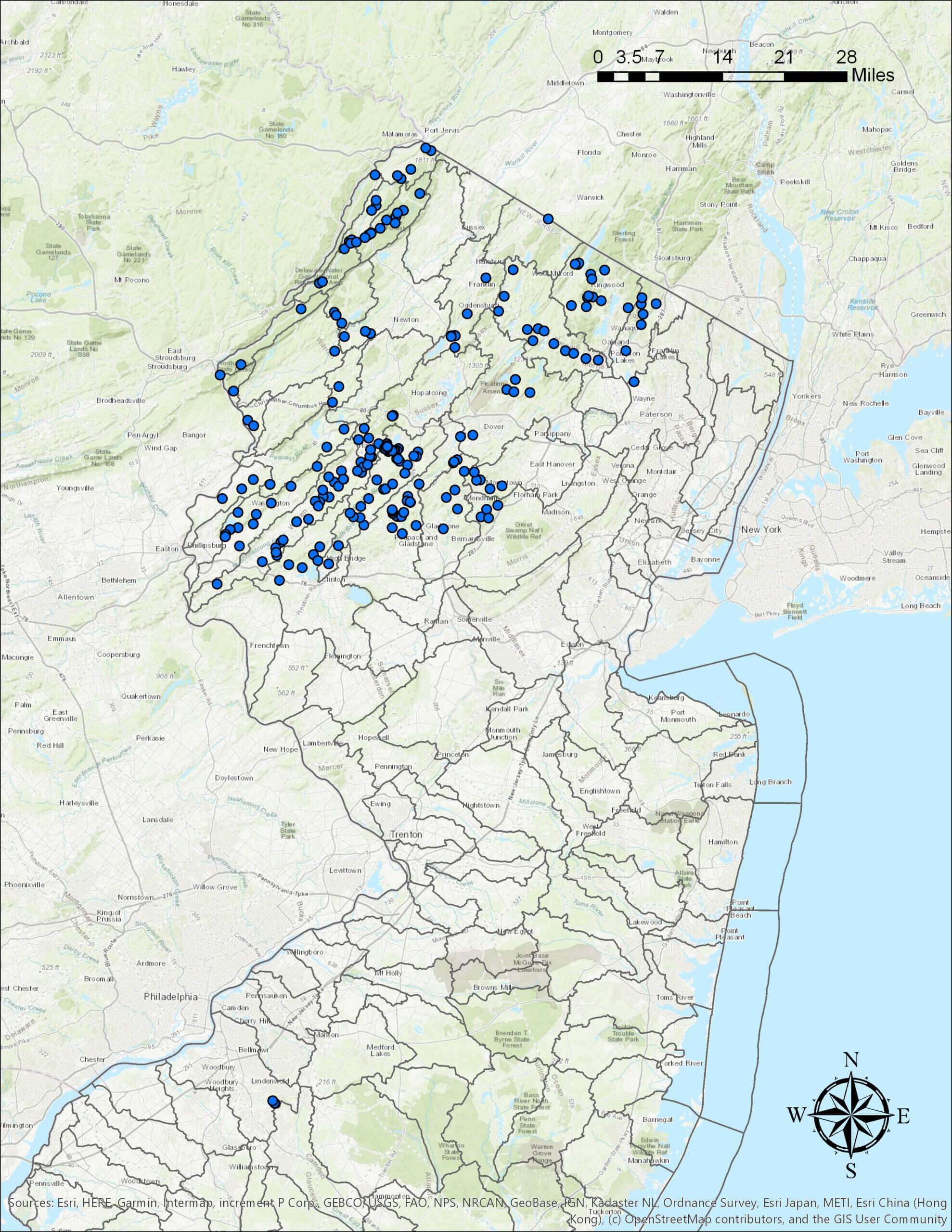In 2013 the Bureau of Freshwater Fisheries established an ambient stream temperature monitoring network on 11 streams having trout fisheries that are recreationally important or of conservation interest. For this project (Trout Stocked Waters Stream Temperature Assessment) water temperature data is continuously collected using data loggers and used to assess current temperature conditions, evaluate long term trends, determine if ambient water quality is consistent with NJDEP’s Surface Water Quality Standards (see page 45 of SWQS, N.J.A.C. 7:9B), and aid in the management of coldwater fisheries in these streams.
In 2015 the scope of work expanded to include a separate five-year study (Trout Production Stream Temperature Study) to gain insight on the link between seasonal stream and air temperatures, flows, and naturally reproducing Brook Trout populations.
Investigating Coldwater Refugia
In 2018, another study (Brook Trout Strongholds Temperature Study) was developed and implemented to collect stream and air temperature data from streams to identify strongholds for wild Brook Trout. This study focuses on streams inhabited by wild Brook Trout, or streams that could be candidates for potential restoration projects for cold water fish. Understanding the relationship between temperature and Brook Trout in stronghold areas helps fisheries managers understand and define this species resiliency to future climate change and identify streams that may be good candidates for Brook Trout restoration.
Reports describing the detail of the work can be found below:
Temperature Project Summary 2019
Temperature Project Summary 2020
 Official Site of The State of New Jersey
Official Site of The State of New Jersey



